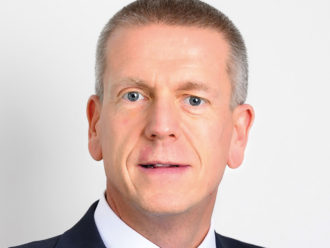Green bonds promise environmentally-conscious investors the best of both worlds: the ability to help the planet without compromising on returns. Many believe they are set to become a mainstay of fixed income portfolios.
“We are trying to achieve both of these objectives – doing well and doing good – without trading them off each other, and green bonds are a prime example of an investment opportunity that allows us to achieve this.”
Manuel Lewin
Zurich Insurance Group’s announcement that it was to invest up to $1bn in World Bank green bonds late last year marked the largest allocation to the security to date. Although they are not yet commonplace in institutional portfolios, it is believed the deal heralds a new era for green bonds.First developed by the World Bank in 2008, green bonds work in the same way as traditional debt but the funds raised are explicitly used to fund environmentally-friendly projects, particularly those aimed at mitigating the consequences of climate change.
Growing green
Issuance has grown considerably since the World Bank launch, with fellow supranational organisations such as the African Development Bank, European Investment Bank and increasingly private companies getting in on the act, creating a market which today is valued at an estimated $14bn. Some $6bn of green paper was issued in 2013 alone, by a increasingly diverse mix of organisations. November was particularly busy, with private sector-focused development institution the IFC issuing its second $1bn green bond of the year, Dutch development finance company FMO raising EUR500m for its first green bond and French energy group EDF holding its own EUR1.4bn issuance, the biggest by a European company so far and twice oversubscribed. In addition to Zurich’s $1bn commitment, buyers last year included Swedish pension funds AP2 and AP4, Dutch pension fund and asset manager APG, US public pension fund Calstrs, AXA IM, Aegon, BlackRock, and State Street Global Advisors. For investors such as Zurich, the rise in popularity is welcome and essential to creating a more investor-friendly, liquid market. “There were a number of first time issuers coming in in 2013 and that’s something we want to see more of,” says Zurich head of responsible investment Manuel Lewin. “We want to see volumes growing and the market becoming more liquid.”
Supply and demand
While green bonds themselves are not illiquid – they are issued by highly-regarded AAA-rated institutions and issues of more than $1bn are not uncommon – investors have so far been happy to keep hold of their bonds until maturity, which is usually between two and five years. “There seems to be quite a high level of demand but not much supply, so the market was very much focussed on primary issuance and people sat on it and that was it,” adds Lewin. “Certainly from an institutional investor perspective it would be nice to see a market that is a bit more actively traded along with some secondary trading. If this business is to grow and get much bigger over time, this is definitely an important component.” With the market still so young, the rules are still being written. Investment banks including Bank of America Merrill Lynch, JP Morgan and Citigroup form part of the drafting committee which is currently tasked with drawing up a set of voluntary guidelines on how to develop and issue green bonds. Deutsche Bank, Goldman Sachs and HSBC have already backed the principles, which provide issuers, investors and underwriters with a blueprint for how to launch a green bond and details of what information is necessary to assess their environment impact. Zurich is also playing an active role in the nascent market, ensuring issuers remain as transparent as possible in reporting to investors where the money is being spent.
Best of both worlds
As more issuers enter the market with bigger launches, green bonds are set to become increasingly popular with investors keen to make a difference while adhering to their fiduciary responsibilities. While their environmentally- friendly credentials are obvious, green bonds have been a consistently reliable investment instrument too. “They tend to be smaller in size, but what you get is spreads that are pretty consistent with non-green bond issuance from the same institution,” says David Lomas, head of global financial institutions group at BlackRock, which runs the portfolio for Zurich. “If I was to buy an IFC bond that was giving me a nominal yield of 65bps and I could get a green bond from the IFC at 65bps, why wouldn’t I buy a green bond? I expect to see more specific mandates in this space coming from institutional investors.” It is this rare combination which also makes these bonds so appealing for Zurich. “We are trying to achieve both of these objectives – doing well and doing good – without trading them off each other, and green bonds are a prime example of an investment opportunity that allows us to achieve this,” says Lewin. “It’s truly a win-win situation for everyone.”




Comments